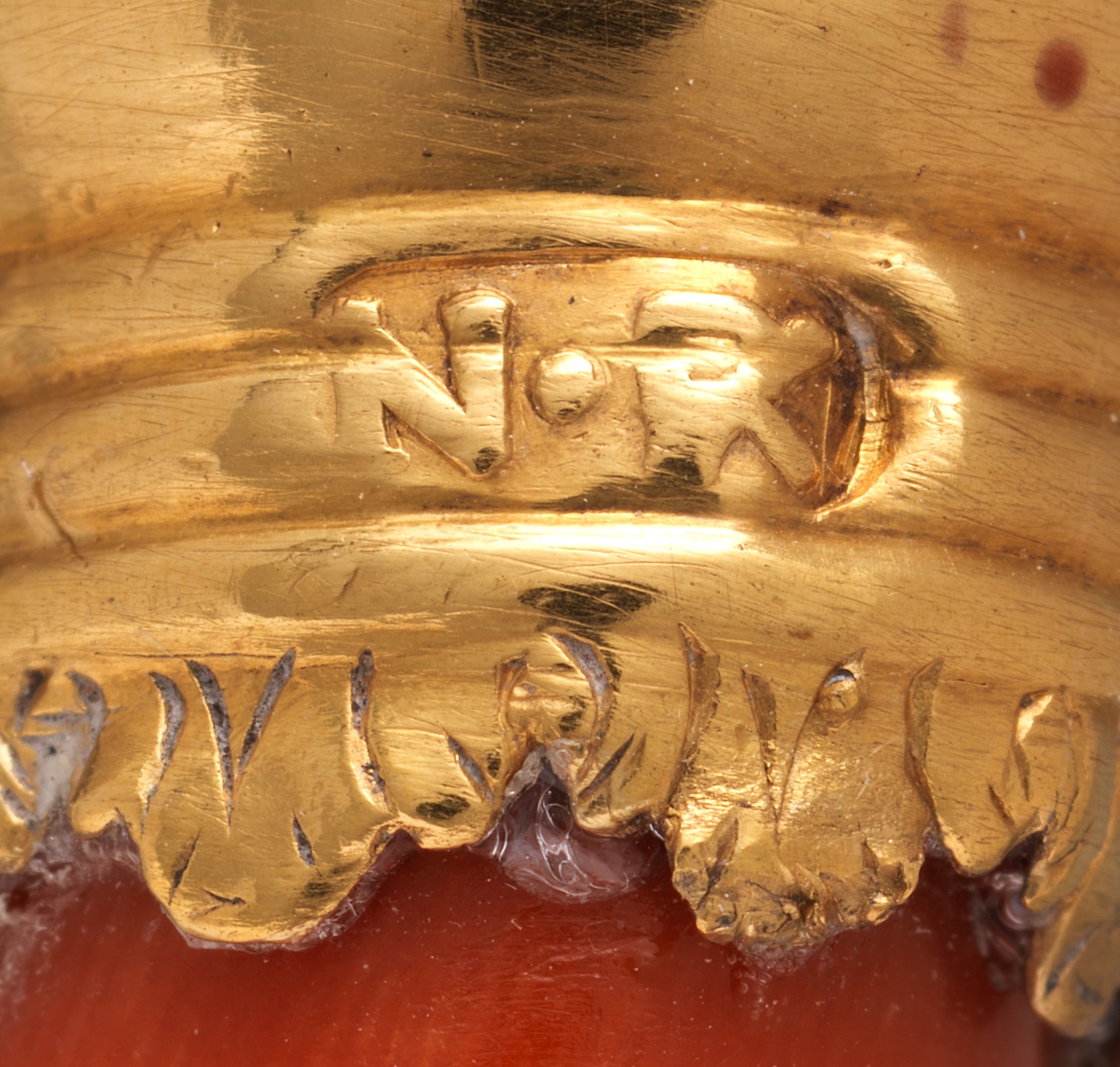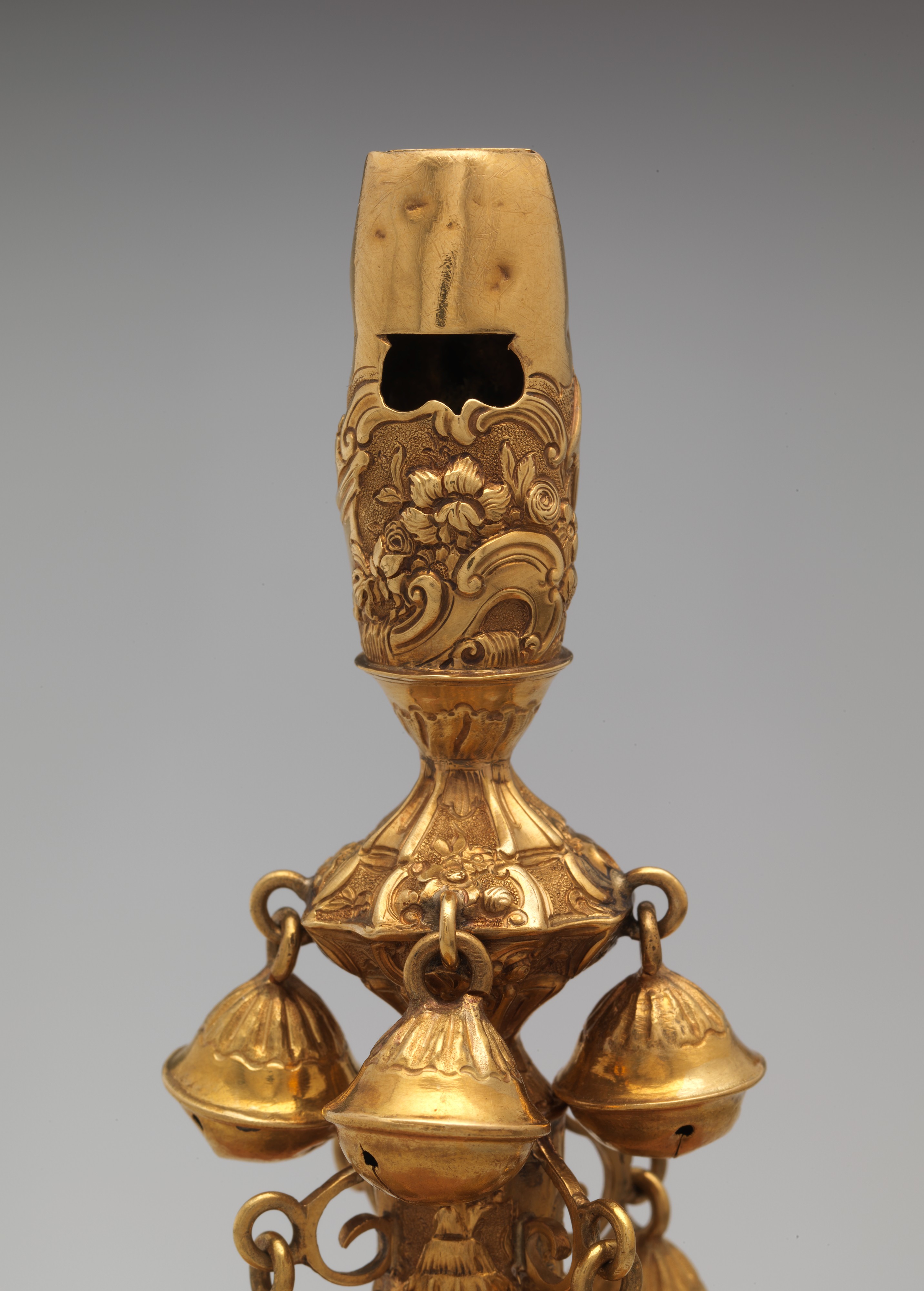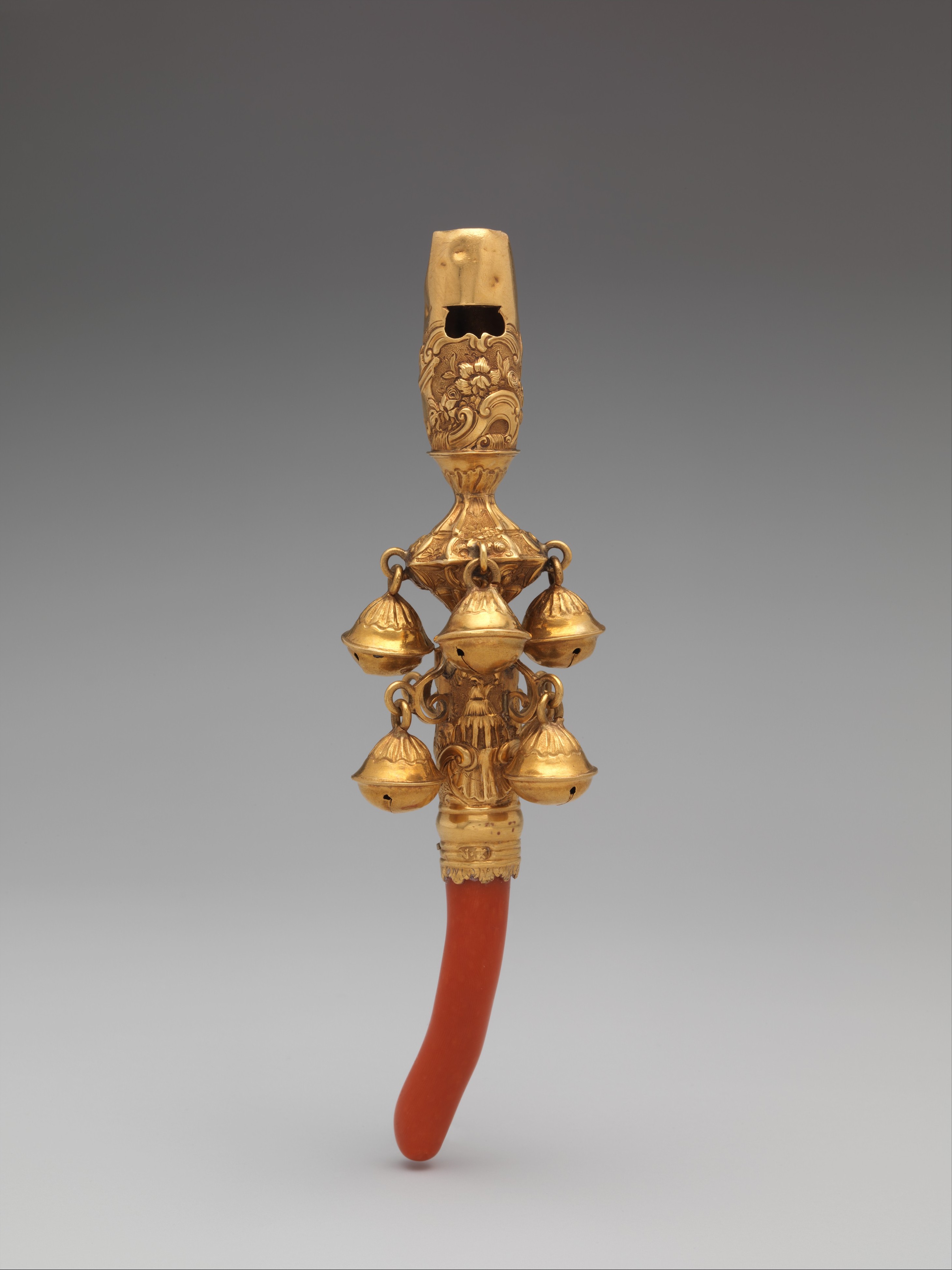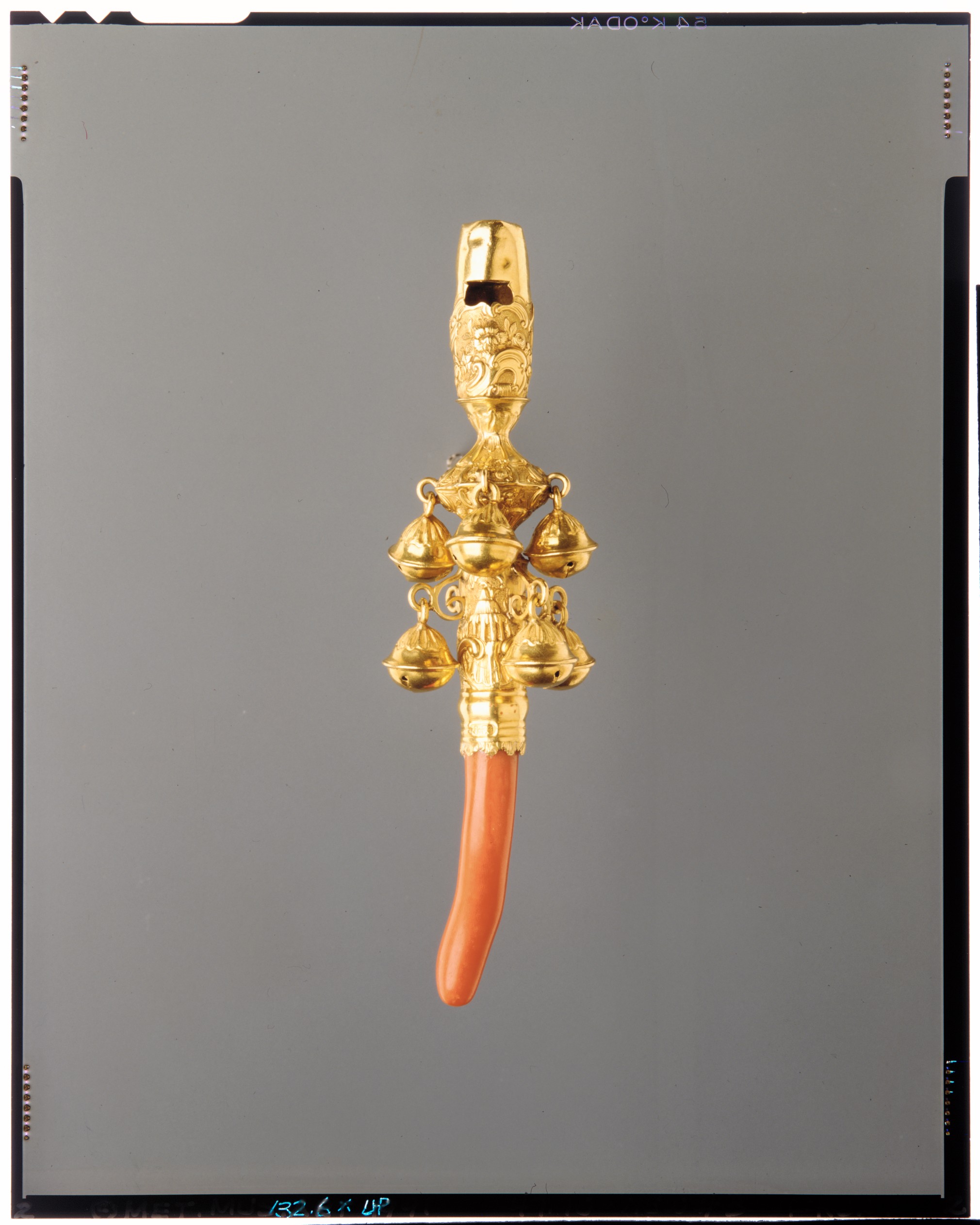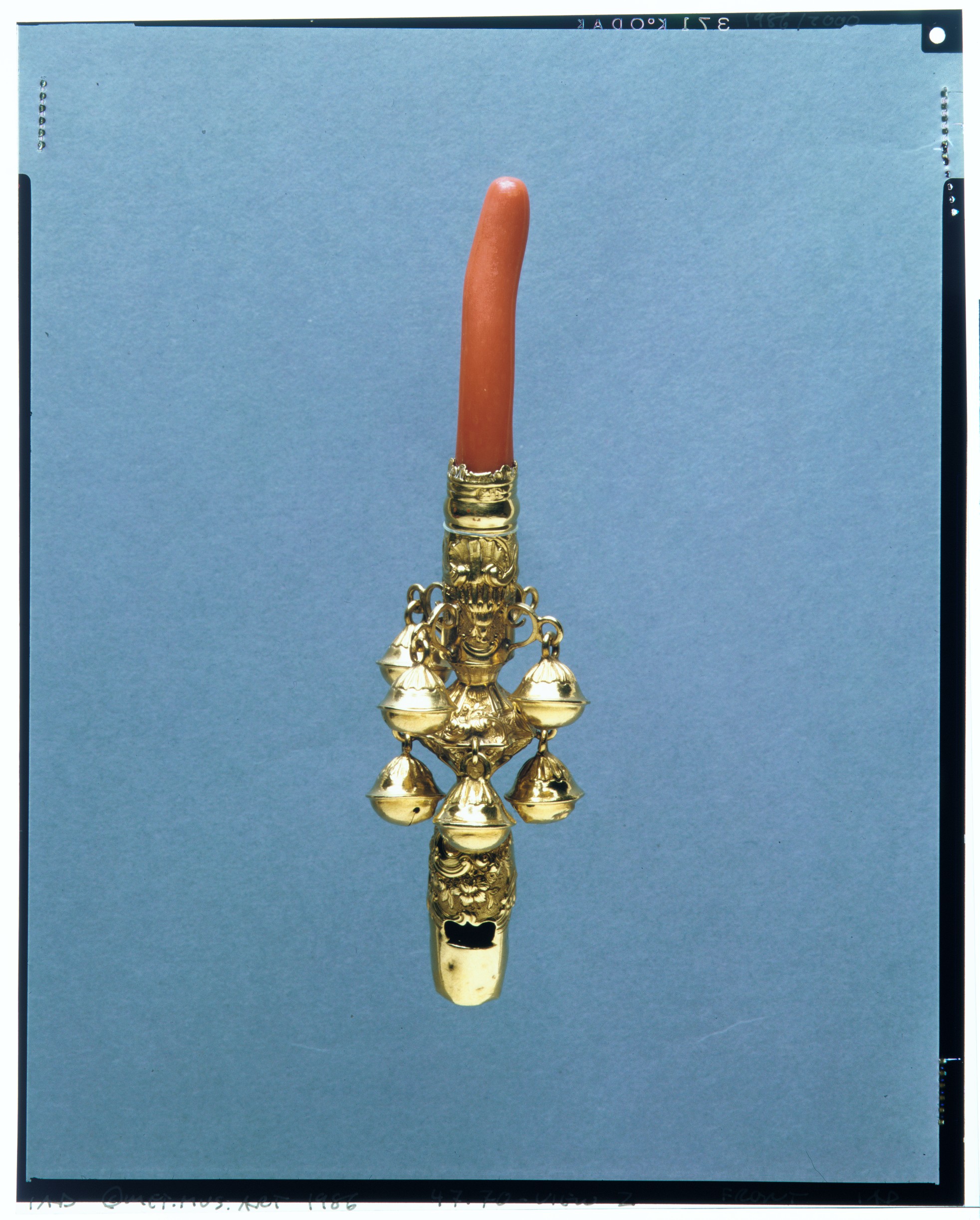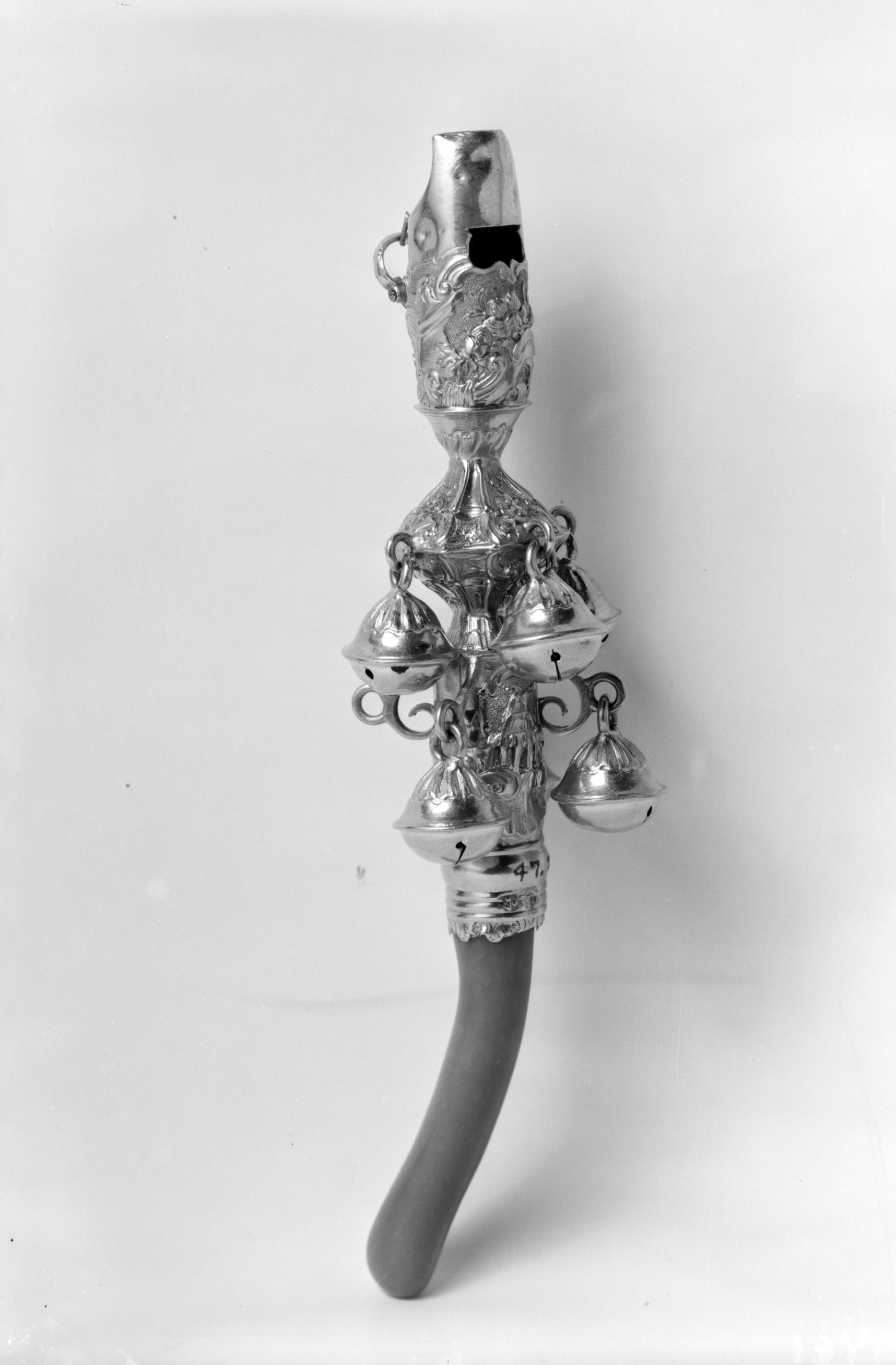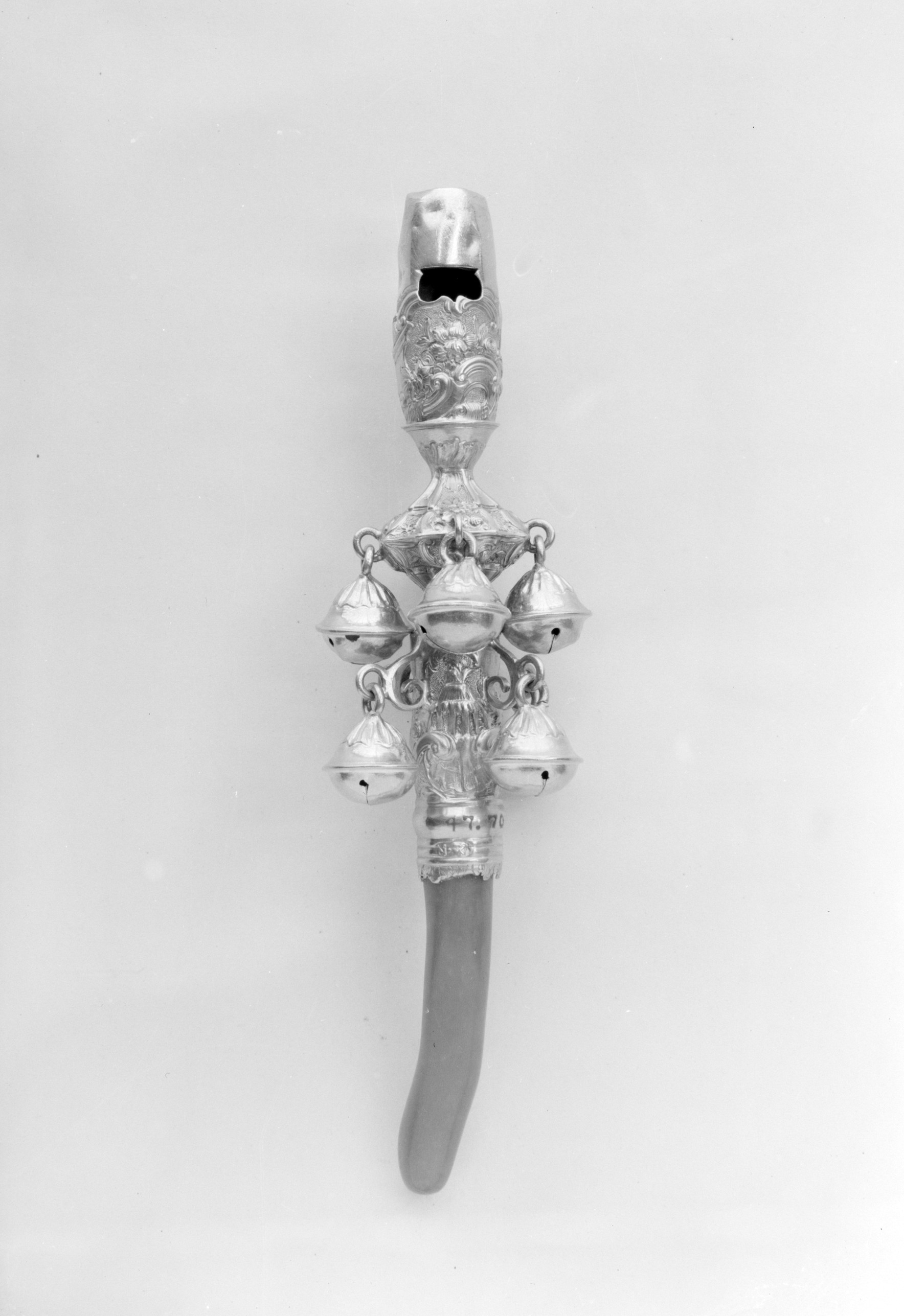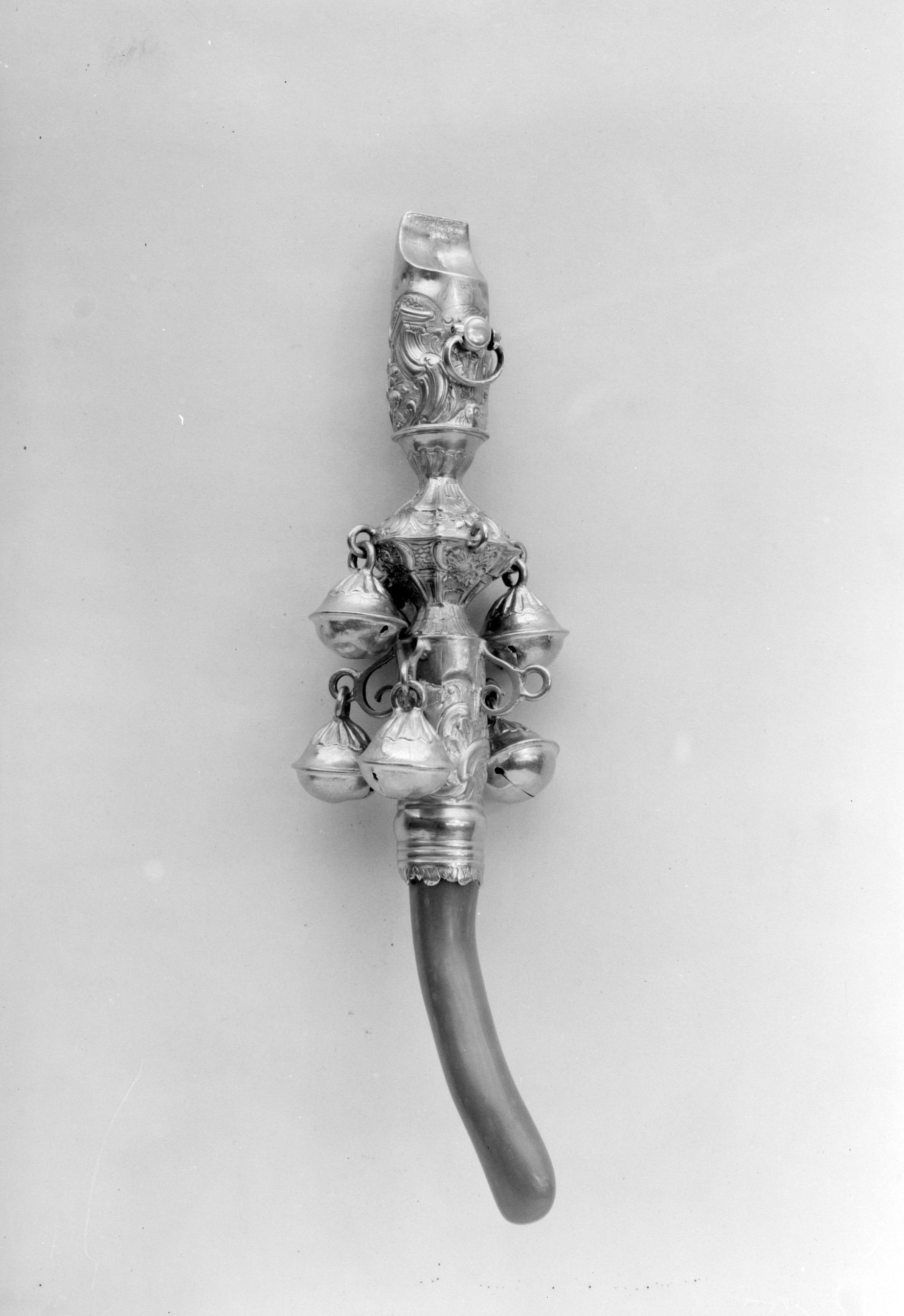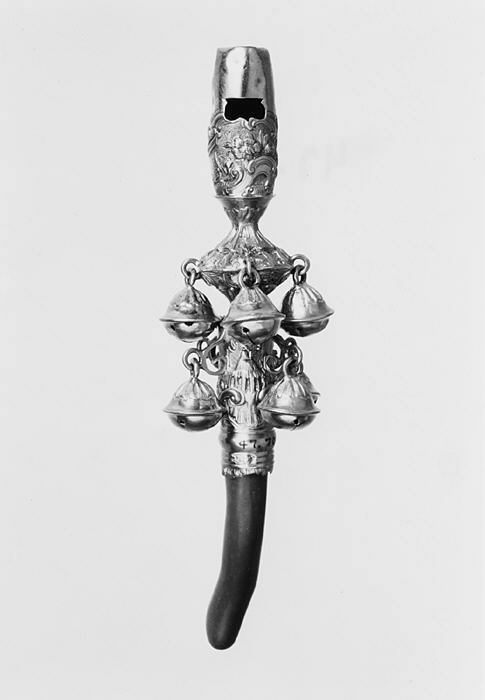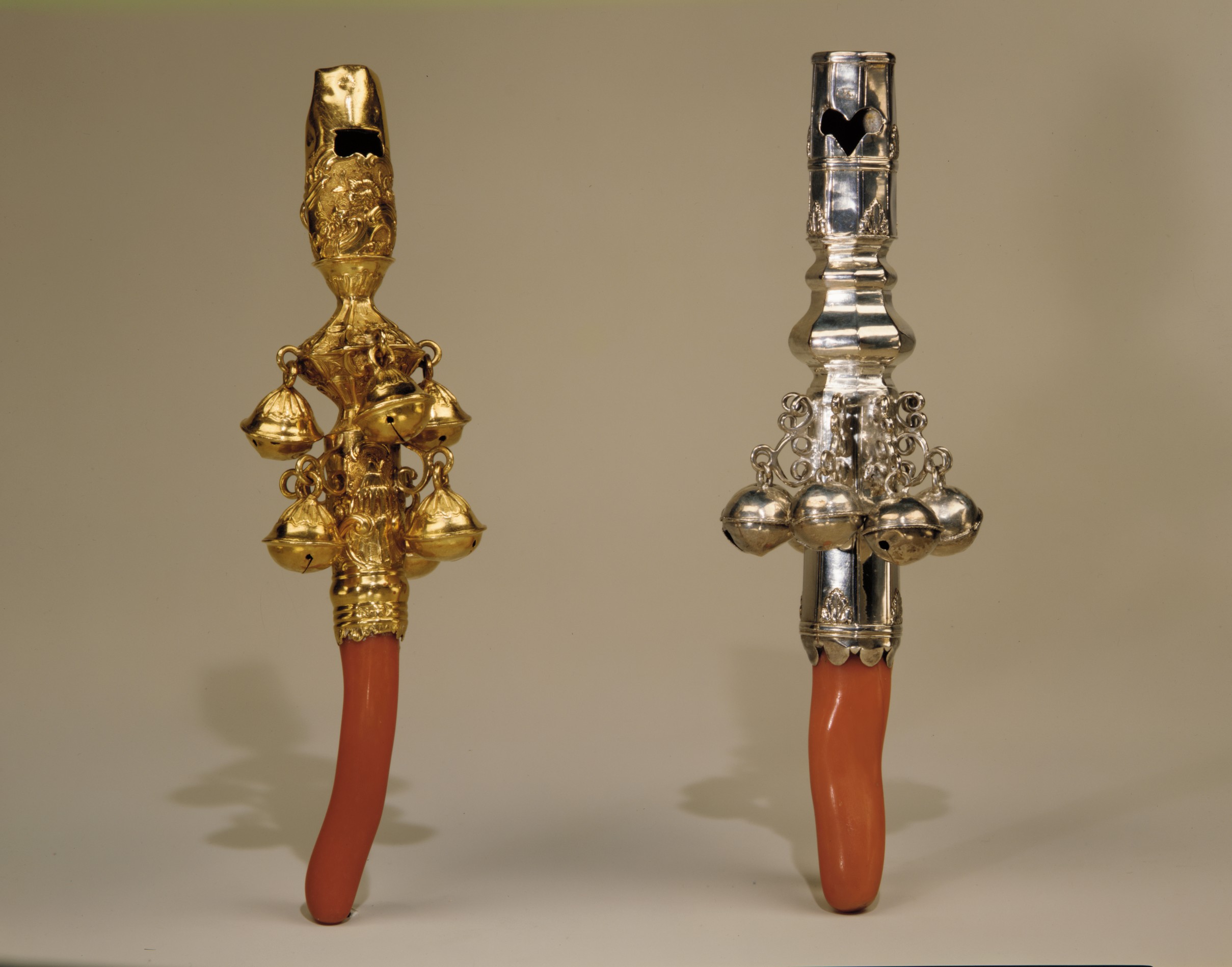Rattle, Whistle, and Bells
Nicholas Roosevelt American
Refined silver and gold luxury goods were not the exclusive purview of adults in colonial America. This elegant gold and coral whistle and bells is at once a toy, teething device, and talisman to ward off illness. It would have hung by the loop on the whistle from a ribbon or chain around the neck or waist of a privileged child. Rattles of this type featuerd prominently in portraits of European and colonial American children not only as emblems of prosperity and social standing but also, and perhaps more imporant, because they serve the serious purpose of safeguarding the child. Since ancient times coral has been considered a potent amulet against disease and evil. Pliny is known to have touted the medicinal virtues of coral, and throughout history coral was thought to safeguard against dangers ranging from witchcraft to epilepsy. When used for teething, it also was believed to strengthen teeth. Far more than a frivolous toy to be shaken, blown, and chewed, the rattle was endowed with the power to protect the health and welfare of the child who used it.
#1134. Rattle, Whistle, and Bells
Due to rights restrictions, this image cannot be enlarged, viewed at full screen, or downloaded.
This artwork is meant to be viewed from right to left. Scroll left to view more.


